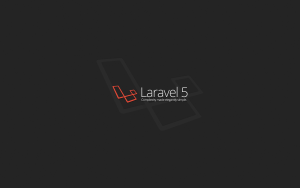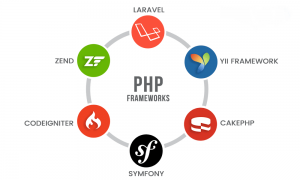Laravel framework
Laravel

PHP programming language is one of the best and most popular programming languages in the field of web designing. Moreover, this programming language has many frameworks, one of which is Laravel. Factors that differentiate this framework from other frameworks in the field of web development are numerous.
In the following, I will cover each of them. Currently, most companies are looking to hire a laravel programmer. So if you want to know what is the reason for the popularity and success of the Laravel framework and why you should choose it to follow us in the continuation of this post.
Framework
You may first ask what the framework is? A programming framework is a set of libraries, standards, design patterns, and coding instructions that provides to developers and programmers within a software framework.
Moreover, several frameworks have been developed for different types of programming languages. in addition, each framework has been created for a specific purpose. For example, the CodeIgniter, Symfony, Zend, Phalcon CakePHP, and Yii frameworks are among the top PHP language frameworks.

Developers and developers use frameworks as a standard platform for designing and developing their applications. In addition, programmers and web designers use pre-written frameworks and commands.
Laravel framework
When it comes to web application development frameworks, the name of Laravel always comes up. This framework can be considered as the most popular PHP programming language framework. Moreover, this framework has quickly become the first option for developers to develop complex web applications. It is a free, open-source framework based on the MVC architecture. This framework provides practical features for programmers and makes programming more enjoyable for them.
“Before learning Laravel, it is better to learn how to code in PHP”. This framework has more security and development speed than other PHP frameworks.
Additionally, through it, you will be able to change the function of many sections without changing the original code. Laravel has a wide variety of libraries and uses most of the Symfony framework libraries.
Moreover, this framework also provides various services for programmers. For example, services such as authentication, user access, Artisan console, payment and billing, cache, etc.
History of Laravel Framework
Now that we get what the Laravel framework is, in this section, we are going to know about its history. Taylor Otwell is the creator of this framework. With the goal of providing a more advanced solution than the CodeIgniter framework, he introduced Laravel to develop web applications.
Version 1
The first version of this framework released to developers in 2011. Then, a month later, the complete and stable version of Laravel released. Laravel 1 included the Model, View, Session, and Navigation mechanisms, but the lack of a controller prevented the framework from actually supporting the MVC architecture.
Version 2
In the same year,2011, Laravel 2 was released with several optimizations. The main feature added in this version was the support of Controllers. With this release, this framework was able to fully support the MVC architecture and become known as a framework.
The second feature added in this version was the blade template rendering engine. This rendering engine introduced with the aim of increasing the speed of template development and reducing the amount of coding.
Version 3
The third version of Laravel was released in 2012. An important feature added to the framework was the use of the CLI command line, known as the artisan. Internal support for database system management and control tools called migrations, support for the Packaging system, and the addition of very rich documentation to laravel.com were some of the features offered in this version of this framework.
Version4
Following the success of this framework in the third version, in 2013 the fourth version released based on Illuminate code.
Because of this feature, users were able to use many packages and libraries developed by other PHP programmers.
Version 5
In 2015, two years after the release of the fourth version of the framework, version 5 of Laravel released. This version of Laravel supported many features.
Support for the task scheduling system using the Scheduler package, asset optimization, simplification of authentication operations, as well as providing a tree structure for application development were some of the features added in Laravel 5. This version of Laravel constantly updated and in each of these updates, many features were added to this framework.
Version 6
After a while, Laravel released version 6, which fixed many of the flaws in version 5 and provided new features that expected by its fans, one of which was the use of Laravel Vapor.
Version 7
The latest version of Laravel is version 7, which has undergone significant changes and improvements over the previous version.
The developers of this framework are always trying to make using this framework simpler and more enjoyable for users. Therefore, they are increasingly developing Laravel to maintain its evolution and progress.
Features and benefits of Laravel Framework
The Laravel framework has many benefits that increase with each update. This framework refers to as the Wizard of the Web. Because many people believe that what this framework does in the web application development process is magical. In Laravel, programmers can do great things with minimal coding and short commands. One example is the implementation of Laravel membership and login forms.
Some of Laravel’s benefits include:
- MVC architecture
- Being open-source
- Easy to learn
- Increasing in project development speed
- high security
- Easily update
- Make things easier like Authentication, Routing, and Caching
- Use Remote Component
- The dramatic increase in coding speed
- Program development without compromising previous program capabilities and code
- Restrict Eloquent using simple commands
- Ability to perform multiple tests such as Unit Testing using simple commands
- Easy access to Database by Migrations
- Artisan command line
- Ability to create different packages
- Using the auto-loading feature
- The ORM tool
- Template Blade engine

